#Eupatorium fistulosum
Text

Bombus on Eupatorium fistulosum / Bumblebees on Hollow Joe-Pye Weed at the Juniper Level Botanical Gardens in Raleigh, NC
#Bombus#Eupatorium fistulosum#Eupatorium#Hollow Joe-Pye Weed#Trumpetweed#Purple thoroughwort#Joe-Pye Weed#Native plants#Native flowers#Native insects#Native pollinators#Nature photography#Flowers#Juniper Level Botanical Gardens#Raleigh NC#Raleigh#North Carolina#Bumblebee#Bumblebees
0 notes
Text

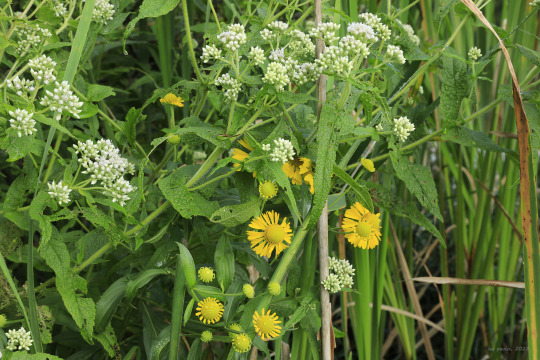




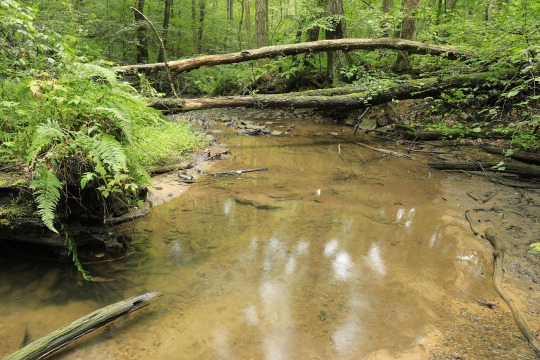


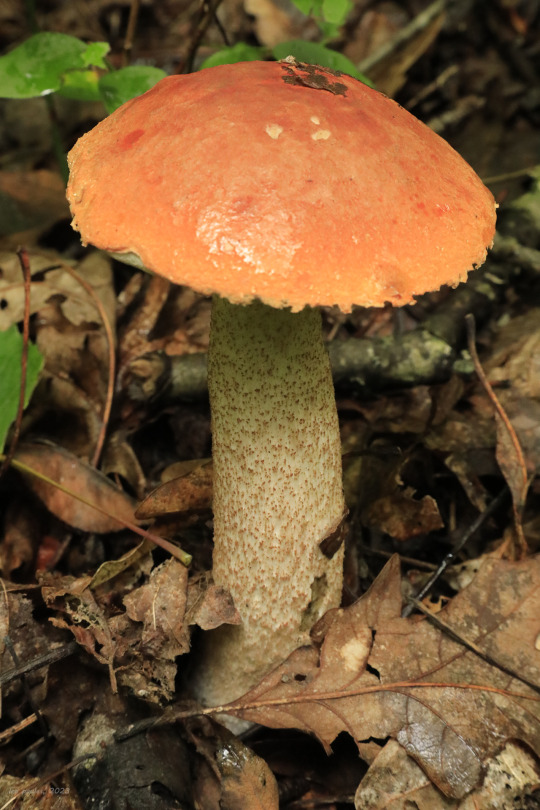
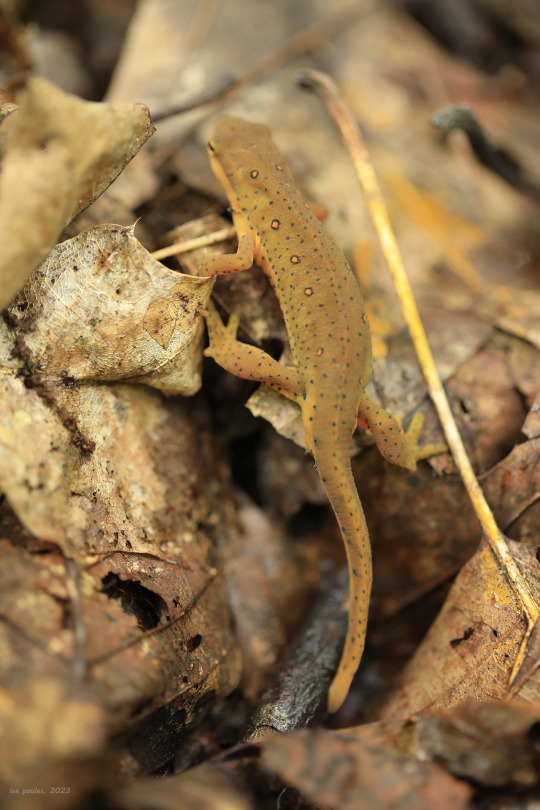


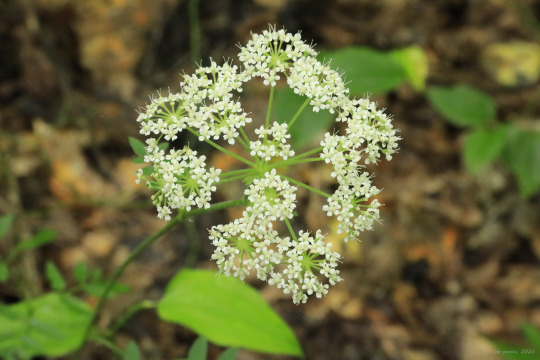


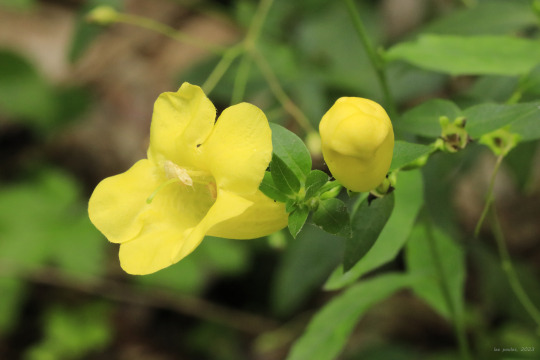

The one thing that excites me more than a pop-up summer thunderstorm is a walk in a damp, dripping, glowing-green forest after the storm has passed. The forest's living essence is made all the more real and immediate by the intoxicating perfume of decaying things, creatures flitting like ghosts through the leaves and underbrush, and clinging raindrops unleashed from the treetops by an evanescent breeze. Photos above are from a hike this morning on Glade Run Trail in Coopers Rock State Forest.
From top: common boneset (Eupatorium perfoliatum), which is closely related to Joe Pye weed, and sneezeweed (Helenium autumnale); the deep purple-red berries of common elderberry (Sambucus canadensis); hollow Joe Pye weed (Eupatorium fistulosum), which can attain a height of 7 to 8 feet; eastern tiger swallowtail (Papilio glaucus), whose tattered wings show the wear and tear of summer errands; a colony of gregarious fungi, perhaps cross-veined troop mushroom (Xeromphalina kauffmanii), which grow in huge numbers on decaying hardwoods; a red-capped bolete, perhaps Leccinum longicurvipes, which is symbiont with oak trees; an eastern newt (Notophthalmus viridescens); white wood aster (Eurybia divaricata); bigleaf aster (Eurybia macrophylla); cowbane (Oxypolis rigidior), also known as common water dropwort; bluestem goldenrod (Solidago caesia), a woodland goldenrod with flowerheads in the leaf axils; and Appalachian oak-leach (Aureolaria laevigata), also known as smooth false foxglove, which is semi-parasitic on oak tree roots.
#appalachia#vandalia#west virginia#wildflowers#flora#summer#coopers rock state forest#glade run trail#common boneset#sneezeweed#common elderberry#hollow joe pye weed#eastern tiger swallowtail#butterfly#lepidoptera#eastern newt#amphibian#fungi#bolete#white wood aster#bigleaf aster#cowbane#common water dropwort#bluestem goldenrod#blue-stemmed goldenrod#wreath goldenrod#appalachian oak-leach#smooth false foxglove
137 notes
·
View notes
Text
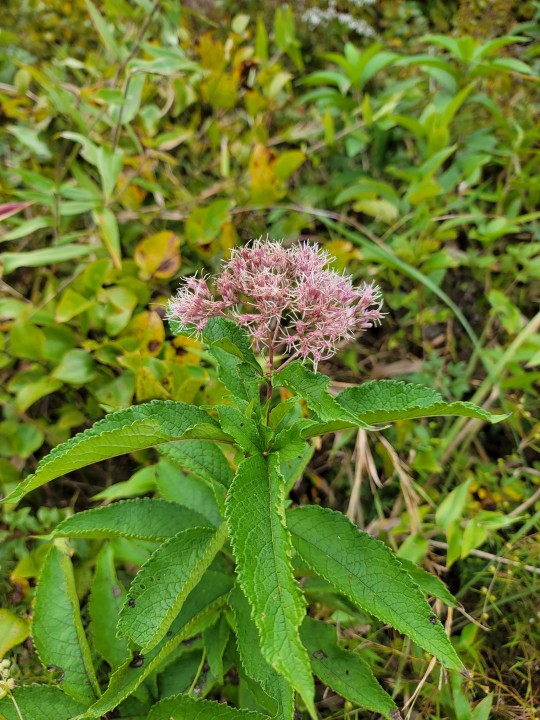

Native plants of the day: Eutrochium fistulosum or Hollow Joe Pye Weed
This species of Eutrochium (previously classified as Eupatorium) is a perennial herb closely related to Purple Joe Pye Weed. This plant is common in wet-moist locations throughout the eastern US including wide variety of stressed environments (like the serpentine barrens I found this in). The Hollow Joe Pye Weed can get up to 5-7ft easily with lovely pink/purple flowers. In late summer it's not uncommon to see this plant swarmed with pollinators and hummingbirds. This plant produces thousands of wind propelled seeds of which only a few are actually viable, making our Joe pye weed less weedy than the name implies.
4 notes
·
View notes
Photo

Eupatorium fistulosum
12 notes
·
View notes
Text
the audubon society plants list finally loaded kids let’s do a brief (haha) cold medicine induced analysis of what the heck they’re recommending for my local area (western PA) and whether it could grow in my shitty yard (if i’m unfamiliar with it i’m skipping it just to be fair)
It’s alphabetical by common name I guess so ok i’m doing this under a cut I supppose
Allegheny Monkey Flower (Mimulus ringens) - this plant is indeed one you see kinda often...... on the very edge of the Allegheny river literally growing as a marginal plant. not ideal unless you got a pond or live in a swamp
Allegheny Serviceberry (Amelanchier laevis) - this is one you see growing in the woods near swamps so nope, not in this drought hellscape of a yard
Alternate-Leaf Dogwood (Cornus alternifolia) - another understory moisture loving tree/shrub... next
American Beech (Fagus grandifolia) - again, moisture loving woodland tree. European Beeches are overall more drought tolerant so if you see a beech in the city or suburbs, it’s probably not an American Beech. also, in my area, you can’t find an American Beech that isn’t suffering from Beech bark disease unfortunately
American Black Elderberry (Sambucus nigra ssp. canadensis) - These are good plants and grow all along the shady woodsides here. Same issue though, they like moisture and at least partial shade. And the ornamental varieties you can find at garden centers tend to be European hybrids with fancy leaves
American Pokeweed (Phytolacca americana) - shadey woodland lad again. They’re also very very weedy idk that anyone would want this in their garden.
American Witch-Hazel (Hamamelis virginiana) - a good plant. still needs moist soil but I think would probably be ok. It looks really cool planted near grasses because it blooms in fallish
Big Bluestem (Andropogon gerardi) - finally a prairie plant!! it’s my boy big bluestem. unfortunately, it can look kinda wild and weedy for a suburban garden unless you do it right.
Black Chokeberry (Aronia melanocarpa) - handsome, good, nice berries, good fall foliage, excellent choice, prefers full sun but still likes it a bit moist and will drop all its bottom leaves and turn fall colors early if you underwater it oops i definitely never was responsible for that at work with b&b aronias.
Black Raspberry (Rubus occidentalis) - oh word we got these in our garden and the birds actually like the red ones better rip
Black-Eyed-Susan (Rudbeckia hirta) - that’s right babey it’s Susan. this baby will reseed all day in sun or shade and birds love that shit. downfall is the species plant is prone to rust and cultivars do a bit better.
Butterfly Milkweed (Asclepias tuberosa) - Good and Wholesome friend. I don’t recommend this as baby’s first milkweed though because they can be slow to establish and kinda disappointing and small and if you get caterpillars on it the first year, it may not survive.
Cardinal-Flower (Lobelia cardinalis) - my mom actually has managed to keep a Lobelia alive in the shadiest, wettest part of her garden but listen...... this is a marginal or swamp plant. Put it in the swamp.
Common Buttonbush (Cephalanthus occidentalis) - it’s the bae
Common Milkweed (Asclepias syriaca) - do not try to buy this as an established plant at a garden center, they will look at you funny and point at the roadsides. Either wait until fall seedpod time and go harvest some or buy some seeds online
Common Snowberry (Symphoricarpos albus) - I had no idea this was native actually but it’s cool because it gets big white ORBS
Common Winterberry (Ilex verticillata) - it’s got stems. it’s got berries. it can grow wherever. what more could you want??? english holly who?????
Common Yarrow (Achillea millefolium) - actually often confusingly hybridized with European Yarrows so no one knows whether they’re ~true~ natives or not. Who cares they will survive anything except a swamp. They will live in a drought ass no topsoil suburban neighborhood like a CHAMP. they were made for this.
Dense Gayfeather (Liatris spicata) - just including this one because it sounds like a Good Omens joke
Flowering Dogwood (Cornus florida) - put that baby tree back in the moist woodlands where it came from or so help me
Gray-Head Mexican-Hat (Ratibida pinnata) - ayyy prairie plant, though this isn’t the species you commonly see for sale at garden centers and this one is decidedly less phallic than R. columnifera so that’s a bummer.
Great Blue Lobelia (Lobelia siphilitica) - we half killed this at work because it doesn’t love pot culture or me but someone still bought it all. don’t put this in your dry ass suburban neighborhood or she will hate you too
Northern Bayberry (Morella pensylvanica) - i call this myrica pensylvanica but whatever. birds love it. so do japanese beetles unfortunately
Pennsylvania Sedge (Carex pensylvanica) - it’s a sedge
Red Columbine (Aquilegia canadensis) - unlike other columbine, this bitch likes full sun and probably will grow and reseed anywhere
Redbud (Cercis canadensis) - another understory-ish moisture loving tree but a lot of the cultivars do just fine in the middle of sad suburban yards. also good. blooms wherever it wants while nakey.
Scarlet Beebalm (Monarda didyma) - you will only ever find cultivars of this but who knows, they may slightly more mildew resistant for at least a little while
Shag-Bark Hickory (Carya ovata) - big, handsome, looks like it’s seconds away from falling apart at all times. just how i like my men.
Smooth Oxeye (Heliopsis helianthoides) - please let the one in my mom’s yard know that it’s meant to survive dry soils in full sun
Spotted Beebalm (Monarda punctata) - my favorite bee balm but doesn’t have the Wow factor of M. didyma cultivars. It likes the sun and dry though
Spotted Touch-Me-Not (Impatiens capensis) - wholesome friend! But no one in their right mind would plant this on purpose in their garden also it would be wilt-city out here in the drought ass topsoil-less surburbs. these babies used to grow between the greenhouses and I used to water them like some kinda of bleeding heart
Swamp Milkweed (Asclepias incarnata) - she can actually live pretty well in the middle of drought ass suburban yard and spreads easily by seed but expect half the lower leaves to yellow and drop off by midsummer. poor darling. put her back in the swamp. This is the most reliable commerically available milkweed you will find because it takes to pot culture way better than other milkweeds (rip all the butterfly weed horticulture land kills yearly)
Sweet-Bay (Magnolia virginiana) - more like sweet bae am I right???? actually she wouldn’t live in my yard. needs some afternoon shade and moist, rich soil.
Sweet-Scented Joe-Pye-Weed (Eutrochium purpureum) - It’s Joe!!!!! Will grow all over. Will get 7 feet tall with massive flowers just because he can. Will grow in a swamp, will grow on a hillside, will grow beside Wal-Mart. Joe don’t care. I still call it Eupatorium because I resist change and actually I’m not 100% sure if this or E. fistulosum that is most common around here.
Tall Tickseed (Coreopsis tripteris) - coreopsis is a really popular genus to see on native plant lists but there aren’t many native to my area of Pennsylvania and you won’t find anything but C. verticillata or C. lanceolata cultivars in garden centers. BUt apparently this bitch can get NINE FEET TALL i’m swooning
Trumpet-Creeper (Campsis radicans) - ok, i’d avoid planting this baby unless you know exactly what you’re doing. she may be native but she can and will do her best to eat your home and foundation and your garden in general. she will do her rhizomey best to runner away from you into the wilderness. fun to grow across a pergola though but she will EAT your TREES and your HOME
Virginia-Creeper (Parthenocissus quinquefolia) - ????? no one is going to deliberately plant this, Audubon Society
Wand Panic Grass (Panicum virgatum) - this is why I think making these lists with common name first is so hilarious because what????? I know this as “Switchgrass” which sounds nice and normal wtf is a Wand Panic Grass. that’s what i’m going to call bad bottom dysphoria episodes from now on
White Turtlehead (Chelone glabra) - likes it wet and shaded so wouldn’t do nice in my yard. also why even BOTHER planting this plant unless you’re going to do the cultivar ‘Hot Lips’ (jk probably the white one is more native insects friendly)
Wild Hydrangea (Hydrangea arborescens) - she’s cute and all but if you want a Hydrangea just go full cliche H. paniculata cultivar or nothing. This plant would hate my whole entire yard and then die
anyway, that’s all the plants on the list I felt like rambling about on this fine Tuesday morning. Overall, idk how helpful a list like this would be for first time gardeners, because they would run into the issue of not being able to actually their hands on most of these plants.
Very few on the list would actually be suitable for growing in a new suburban neighborhood or an urban garden. This is an area naturally full of sensitive, woodland, rich, moist soil-loving plants... and unfortunately, those areas are disappearing more and more under new developments and the native pollinators and wildlife are going along with them.
#i really just did that and rambled about a whole lot of plants for no good reason#long post#idk what to tag this as
19 notes
·
View notes
Photo

Eupatorium fistulosum is a tall hardy flower of early fall. Loves wet spots. Perennial
via Greenhouse Projects
2 notes
·
View notes
Text
Im Staudengarten wächst alles zu unserer Zufriedenheit Mittlerweile sind die Baumunterpflanzungen gut gewachsen, wenn auch hier und da noch kleine Lücken sind. Die werden sicher in den nächsten Wochen verschwunden sein. Störend sind momentan nur die gestutzten Bäume, aber der späte Schnitt musste sein, damit sie künftig besser wachsen und den Garten wieder leicht beschatten.
Ein paar Regengüsse hat es inzwischen gegeben und die Regenfässer sind wieder gefüllt. Gerade jetzt am Anfang ist es besonders wichtig, das Gemüse zu gießen. Riskieren wir mal einen Blick in den Küchengarten und auf die neuen Hügelbeete.
Am Teich ringsherum ist es fast wie im Dschungel und auch im Wasser wächst alles tüchtig. Heute haben wir schon zwei Teichrosenknospen entdeckt…
‘Sunny Bit’
Eupatorium fistulosum ‘Glutball’
Ageratina altissima ‘Chocolate’
Iris laevigata
Knospen der Teichrose
Aconogonon spec. ‘Johanniswolke’
Zu den Rosen kommen wir im nächsten Beitrag……sie fangen gerade an zu blühen 😉
Gartenspaziergang Mitte Mai Im Staudengarten wächst alles zu unserer Zufriedenheit Mittlerweile sind die Baumunterpflanzungen gut gewachsen, wenn auch hier und da noch kleine Lücken sind.
1 note
·
View note
Text
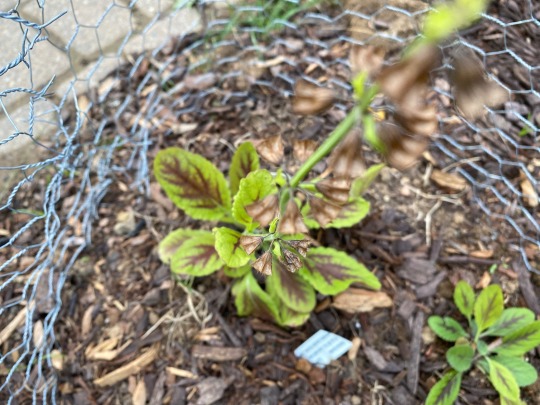

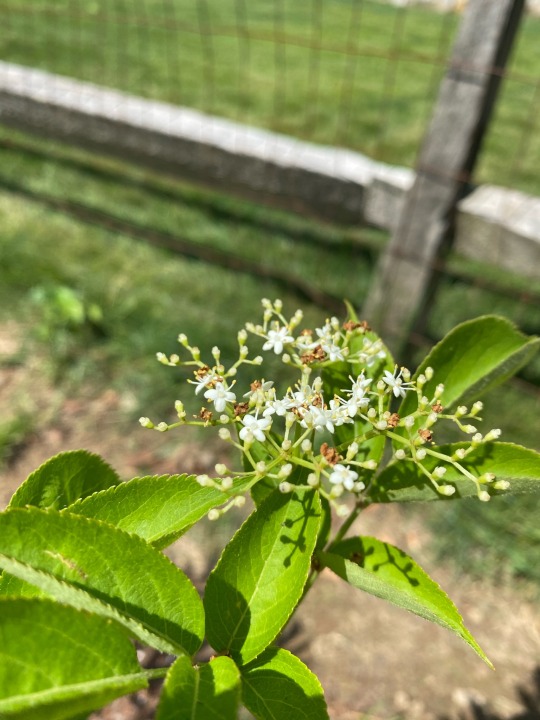
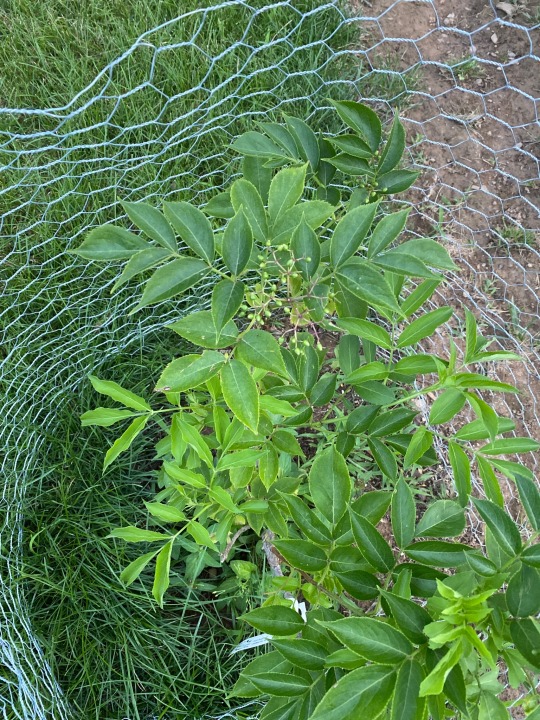
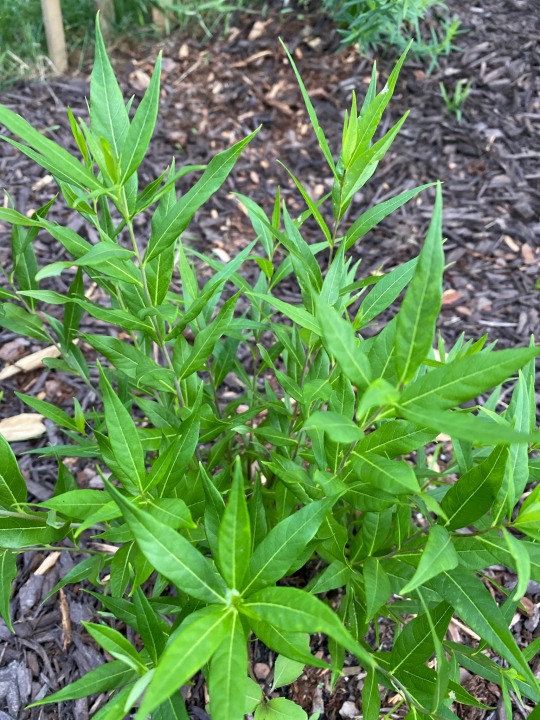

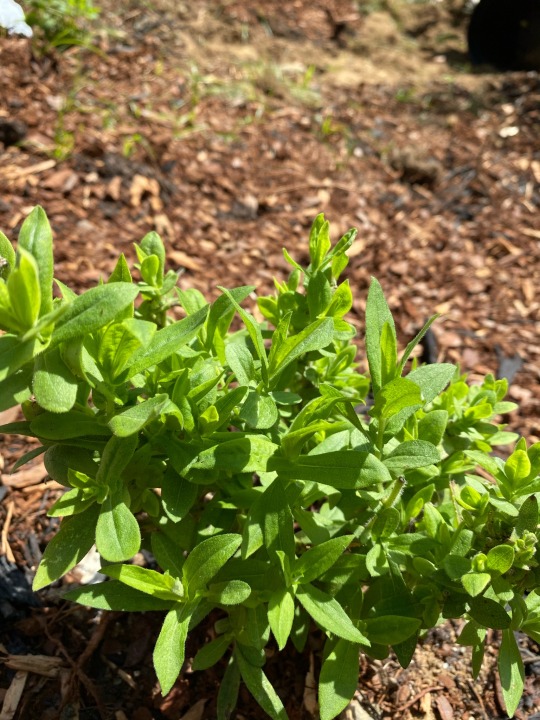
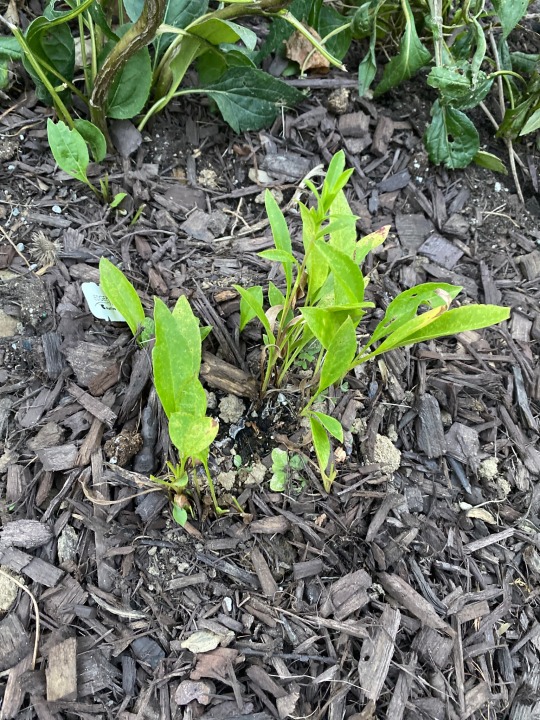


1,2 Salvia Lyrata - lyre leaf sage
3,4 is of Sambucus Nigra - black Elderberry
5,6 Amsonia tabernaemontana + Amsonia tabernaemontana ‘blue ice’ - Bluestar and ‘blue ice’
7 Aster Novae-angliae syn. Symphyotrichum novae- angliae - New England Aster
8 Aster spectabilis syn. Eurybia spectabilis - eastern showy aster
9 Eupatorium fistulosum syn. Eutrochium fistulosa - hollow Joe pyed weed
10 - Aconitum unicatum ‘White Witch’ - white wild monkshood (photo from a few weeks ago it’s doing a lot better now and I actually raised the soil there so it can spread better)
Majority of the plants I have are native that are in the ground as I want to introduce them again to the landscape. I’m excited to explore and learn from the plant elders. Both the Medicinal and more magic teachings of the plant elders. I’ll also post updates. I wish to become more in tune with the land
0 notes
Photo
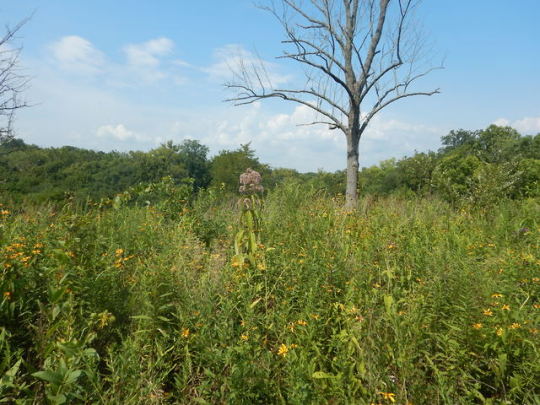
Eutrochium fistulosum
Great Joe Pye
sitting idle at the top of the Adena Mound Prairie
#Eutrochium fistulosum#eupatorium#eupatorium fistulosum#eutrochium#botany#plantblr#ohio#nature#natureblr#naturecore
5 notes
·
View notes
Photo
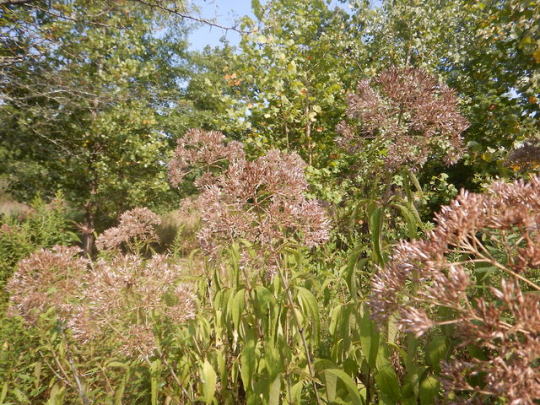
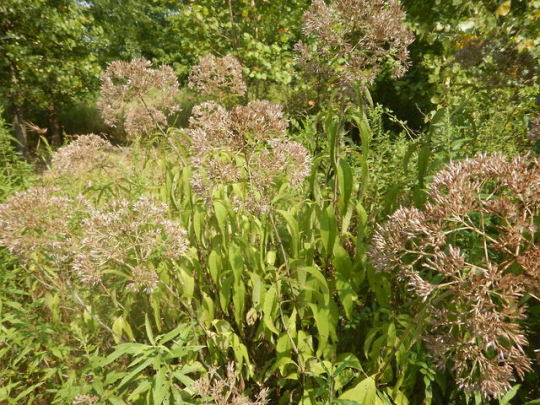

Eutrochium fistulosum
after a few weeks of solid 95+ degree highs and no rain the giant Joe Pye is looking sad to say the least.
Photographed at the Adena Mound Prairie
31 notes
·
View notes
Text
Bevor es bald in den Oktober geht, wollten wir mit Euch noch einmal durch den Garten gehen…
Am Teich blüht der Wasserdost Eupatorium fistulosum ‘Glutball’ und die weidenblättrige Sonnenblume Helianthus salicifolius legt sich grazil über den Teich, der Sonne entgegen. Feurig streckt der Kerzenknöterich Bistorta amplexicaulis ‘Speciosa’ seine Blüten nach oben und das Weinlaub am Sitzplatz färbt sich und fällt schon…
Vereinzelt blühen die englischen Rosen, sogar der einmalblühende Rambler ‘Francois Juranville’ zeigt hier und da neue Blüten…
In den Staudenbeeten fangen nach und nach die unterschiedlichen Herbstastern an zu blühen. Damit locken sie unzählige Schmetterlinge, Bienen und andere Insekten!
ach, und Zuwachs haben wir auch noch bekommen 😉
Hoffentlich gibt es noch ein paar schöne Tage, die dunkle Jahreszeit ist sonst so lang…..
Im Septembergarten Bevor es bald in den Oktober geht, wollten wir mit Euch noch einmal durch den Garten gehen...
0 notes
Text
Der September hat nicht gerade warm und sonnig begonnen. Der Rasen wird nach den ersten kalten Nächten gar nicht mehr richtig trocken. Umso mehr freuen wir uns, wenn nach dem Morgennebel doch noch die Sonne erscheint!
Am Teich ist es morgens besonders schön. Die weidenblättrige Sonnenblume Helianthus salicifolius wächst zwischen den Nachtkerzen Oenothera biennis ‘Grandiflora’ schwungvoll dem Licht entgegen und die purpurfarbenen Blüten des Wasserdosts Eupatorium fistulosum ‘Glutball’ und ‘Riesenschirm’ locken unzählige Insekten – eine wahre Wonne ist es, dem Summen und Brummen zu lauschen. Hier und da blühen noch ein paar gelbe Taglilien, zusammen mit den Purpur-Sonnenhüten ein Gedicht!
Die Rosen zeigen ihren zweiten Flor….sogar bei der einmal blühenden Ramblerrose ‘Francois Juranville’ entdeckte ich heute zwei Blüten!
Francois Juranville
Uetersener Klosterrose
Novalis
Gentle Hermione
Graham Thomas
Kronprinzessin Viktoria
Marie Dermar
Sweet Juliet
Im Staudengarten fangen die Herbstastern langsam an zu blühen…zusammen mit den Gräsern wird das ein optisches Spektakel werden, als September Geborene fasziniert mich der Herbst sowieso!
Gaura lindheimeri und Salvia officinalis ‘Berggarten’
Solidago und Delphinium
Helianthus decapetalus ‘Capenoch Star’
Miscanthus sinensis ‘Silberfeder’
Wir wünschen Euch eine schöne Gartenwoche!
Frühherbst – September im Garten Der September hat nicht gerade warm und sonnig begonnen. Der Rasen wird nach den ersten kalten Nächten gar nicht mehr richtig trocken.
0 notes